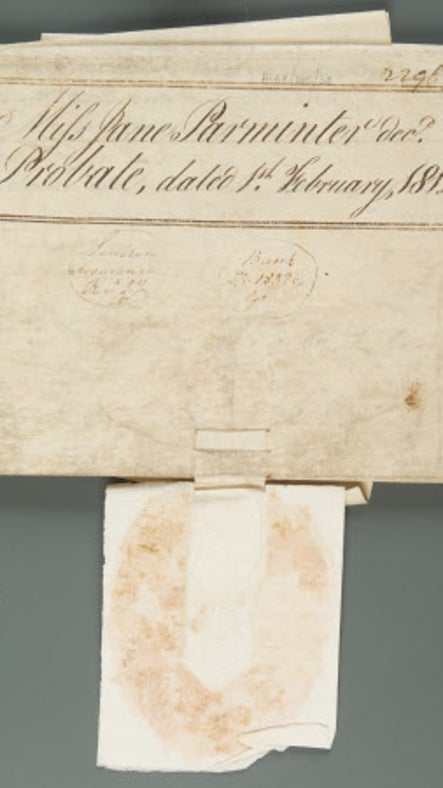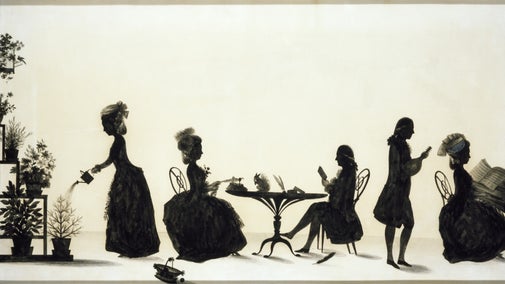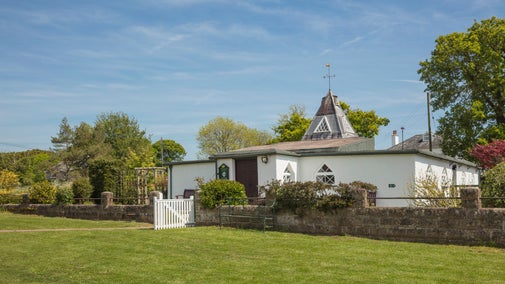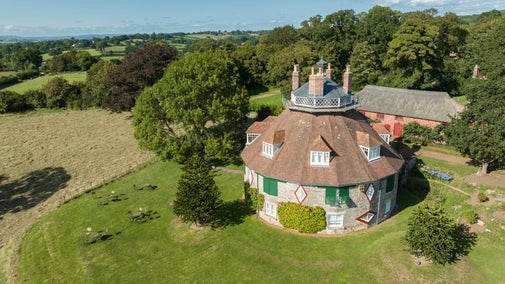The Last Wishes of Jane and Mary Parminter
- Published:
- 28 January 2025

In the early 1800s, it was uncommon for women to own property - and leaving a will, to direct what should happen to a woman’s property after her death, was equally rare. In fact, married women could not own property, or make a will, until 1870 – unless the property in question had been built before marriage. Jane and Mary remained single and unmarried throughout their lives, and so ownership of A la Ronde was theirs. As was the right to make a will. The wills of both women ensured that their estate and possessions were safeguarded, and passed to members of their family.
Jane died in 1811. Her will (pictured below) shows us that she wished to provide for her family after her death. Jane left her share of A la Ronde to her cousin Mary Parminter, saying: "I bequeath unto the said Mary Parminter her Heirs and Assigns forever All my Right and Share Estate and Interest in and to the Messuage and Lands called A la Ronde."
Jane also left money from her stock holdings to her brother, John Parminter and to any children he might have.

Mary died 38 years later, in 1849, and left a much more substantial will.
More detailed than Jane’s, Mary’s will lists specific instructions on how her money, A la Ronde, and its estate was to be kept and cared for, following her death. Interestingly, and very unusually for the time, Mary’s will stipulates that A la Ronde be passed to six of the nearest unmarried women in her family. These women were Jane Hurlock, Sophia Hurlock, Stella Reichel, Mary Melhuish, Ann Black and Louisa Black.
However, Mary left strict conditions that these women needed to adhere to, in order to inherit A la Ronde. The women must:
-
Live at A la Ronde
-
Maintain the house and gardens, not making any changes
-
Remain single, and unmarried, for the rest of their lives
If the women did not follow these conditions, their claim to the property would be void, and it would pass to the next woman in the sequence.
Specifically, the will says that these six women “… may inherit the said dwelling house at A la Ronde... / ... provided she shall not then be, or have been married, for the term of her natural life, if she shall remain single and unmarried... ”. Given the difficulties faced by women in the early 19th century, Mary’s wishes seem to be an act of female solidarity and support.
She adds “…it being my wish and desire that my said dwelling at A la Ronde with the several ornaments articles and things herein before mentioned may be held and enjoyed as a convenient and delightful residence for a kinswoman who shall not have been married…”. Mary's wish for the women inheriting the property to not be married is very clear.
Mary’s will also tells us that she wishes to be buried with Jane at the chapel Point in View. She says, “it is my desire to be buried in the vault made under the building called the Point in View near A la Ronde aforesaid and in which are deposited the remains of my late dear Cousin Mrs Jane Parminter.”. Today you can visit Point in View Chapel, a short walk from A la Ronde, to see where Jane and Mary are interred together.

What can we learn from Mary’s will today?
The words captured in the will show Mary’s concern for ensuring A la Ronde was cared for, following her death. It indicates her wishes that the house, its grounds and contents, should be looked after by women only. It also shows she was conscious of the welfare of other women at this time, as she left lodgings for older women, in the form of almhouses, and in the provision of education for female children.
Even when leaving money to her married friends or servants, Mary declares that the money should be placed into the hands of the woman, rather than given to her husband. Her will states: “… and I hereby direct that the legacies / bequeathed to married women shall be paid into their own proper hands / and not be subject to the control of their respective husbands…”.
At the end of her life, Mary clearly understands the benefits that financial independence can bring to women, and seeks to support them through her will. She sets out a unique legacy for A la Ronde, contrary to the conventions of her time, and in doing shows what women can do, if given the opportunity.

The Compendium
The Compendium is a collection of stories to delight and surprise. You can explore all things A la Ronde here in one central place for the first time. We will be adding new stories for years to come.

Meet the Parminters
Jane and Mary Parminter decided to create an unconventional life for themselves at A la Ronde. So, who were these women and where did they come from?

Point in View Chapel
Learn more about Point in View, the chapel made by the Parminters at A la Ronde as part of their estate.

The Estate
Learn more about the estate at A la Ronde. With views over the countryside to the Exe estuary, the estate is as beautiful and varied as the house itself.